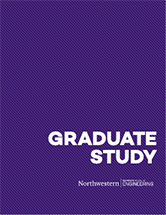Curriculum / DescriptionsMLDS 420: Machine Learning II
VIEW ALL COURSE TIMES AND SESSIONS
Description
This course covers nonparametric modeling of complex, nonlinear predictive relationships in data with categorical (classification) and numerical (regression) response variables. Supervised learning methods include neural networks, trees, nearest neighbors, local kernel weighting, generalized additive models, boosted trees, random forests, support vector machines, and naive Bayes. Emphasis is on practical implementation of the various predictive modeling methods, including selecting among the different methods for a particular data set and predictive modeling problem, empirically tuning the models for optimum predictive performance, and understanding and interpreting the fitted models in terms of which of the predictor variables are the most important and how they effect the predicted response (e.g., nearly linearly, highly nonlinearly, monotonically increasing, monotonically decreasing, strong interactions between variables, etc). Certain fundamental supervised learning concepts and theory will also be covered to build a deeper understanding of the methods.
Course Objectives:
This course covers nonparametric modeling of complex, nonlinear predictive relationships in data with categorical (classification) and numerical (regression) response variables. It is a follow-up course to Predictive Analytics I, which covers linear and logistic regression methods. The course learning objectives are to:
- Understand the most popular and effective modern nonlinear/nonparametric predictive modeling methods and how to expertly use them.
- Identify which method is most appropriate for a particular data set and predictive modeling problem.
- Empirically (based only on the data) fit and tune the predictive models for optimum predictive performance.
- Interpret any black-box fitted model, in terms of how the different predictor variables affect the predicted response and which are the most important.
- Build the knowledge and experience to be able to quickly and expertly self-learn new predictive modeling methods as they are developed and introduced to the predictive modeling community.

